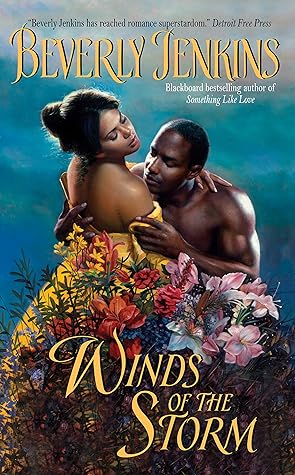More on this book
Community
Kindle Notes & Highlights
To the world the old woman was known as Harriet Tubman, but to Zahra and others, Harriet was Araminta, the name bestowed upon her at birth.
In April 1865, her parents, like other freedmen, had been awarded land under General Sherman’s Special Order 15. The order had promised each freedmen family forty acres on confiscated Reb land in an area that reached from Charleston, South Carolina, to Florida’s St. John’s River. The provision had also been included in the congressional act establishing the Freedman’s Bureau, but the summer after Lincoln’s death, President Johnson forfeited the Blacks’ claims and titles.
Ezi Chinny liked this
During the war, Araminta had headed up a shadowy network of Black spies the army called Black Dispatches. They’d taken on scouting assignments, helped with reconnaissance and gathered information on everything from the deployment of Confederate troops to the size and makeup of fortifications. Some dispatches had even infiltrated the household staffs of the Confederacy’s generals and politicians.
Ezi Chinny liked this
“What worries me,” she said in a serious tone, “is Grant’s people using whatever I find out to pound the last few nails into Reconstruction’s coffin. All the Black Codes, the White Leagues, the killings. The soldiers didn’t die for this.”
At 6:00 a.m. on November 22, 1871, forty-five-year-old Oscar James Dunn, the first Black man to be duly elected lieutenant governor of the state of Louisiana, drew his last breath.
Ezi Chinny liked this
All over the South groups like the White Camelia and the supposedly outlawed Kluxers were hiding their identities beneath sheets and masks and spending the nights terrorizing freedmen to keep them from exercising their rights to vote, send their children to school, and work where they wanted.
The Memphis riots of 1866 began harmlessly enough with the collision of two hacks on a Memphis street. One driver was Black, the other White. It evolved into a three-day orgy of hate and murder fueled by mobs, the police and the local news organs. Forty-six people were killed, forty-four of them Black. Eighty-five people were injured. $100,000 of property, goods and money, much of it owned by the Black soldiers and their families stationed at nearby Fort Pickering was either stolen or burned.
“The common man need not ask because I am unavailable to him, but for a man who matches me in strength and purpose—there is no cost.”
The men of the House of Le Veq lined up for no one, not even a woman as beautiful and as challenging as she was.
The New Orleans riot of July 30, 1866 began when thugs, many of them Confederate veterans, descended on the city’s Mechanics Institute to oppose a convention of Blacks and Whites called to amend the state’s harsh Black Codes. Aided by firemen and police, the Rebs shot at delegates marching to the meeting then broke into the building to attack the attendees already inside. Thirty-seven of the delegates were killed, three of them White. During a hearing on the event, the 39th Congress determined that in addition to the deaths, hundreds more had been injured.
“The times held such promise after the war. Who would have thought we’d have five men of color in Congress today, and yet…” Her voice trailed off, and she shook her head sadly. “Kluxers are breaking into our homes, burning down our schools, killing our teachers. I wonder what kind of country my grandchildren will grow up to see?”
“Never is a strong word, Domino. Life often has a way of negating nevers.”
Confederate General Nathan Bedford Forrest, the man deemed responsible for the 1864 massacre of the Black Union soldiers at Fort Pillow, Tennessee, and the founder of the Kluxers?
An article by P.K. Rose titled The Civil War: Black American Contributions to Union Intelligence can be found at: www.odci.gov/cia/publications/dispatches.dispatch.html.
Dorothy Sterling, in her book The Trouble They Seen: The Story of Reconstruction in the Words of African Americans, published by Da Capo Press, describes Henry Adams as a “one-man investigating committee.
Blassingame, John W. Black New Orleans: 1860–1880. University of Chicago Press, Ltd., London, 1976. Foner, Eric. Reconstruction: America’s Unfinished Revolution. 1863–1877. Harper and Row, New York, 1988. Gehman, Margaret. Free People of Color of New Orleans. Margaret Media, New Orleans, 1994. Quarles, Benjamin. The Negro in the American Revolution. University of North Carolina Press, 1961. (See this book for information on the original James Lafayette.)


